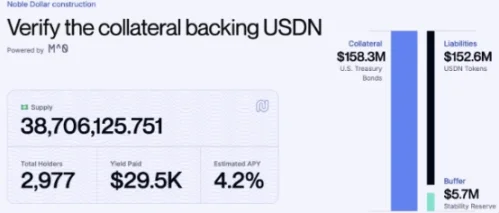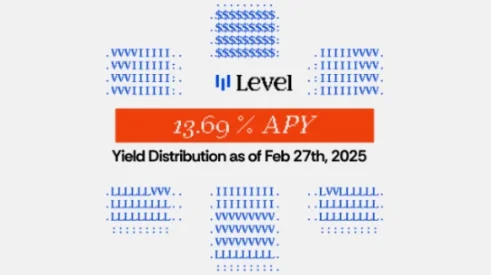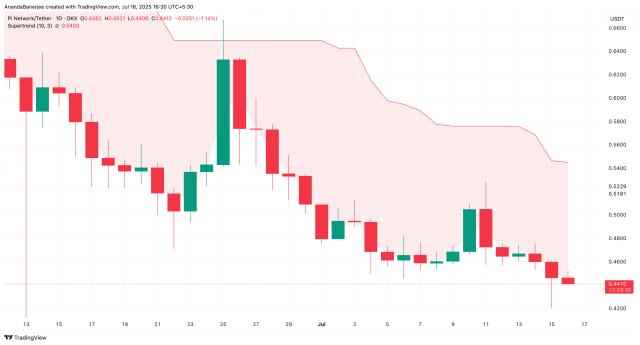Four Yield-Generating Stablecoin Protocols About to TGE: Who Will Define the New DeFi Paradigm? (Including Points Program Introduction)
Before USDC and USDT truly integrated with CEX and DEX, we had to obtain a delta-neutral risk exposure on BitMEX by shorting 1x BTC futures. This was essentially the most capital-efficient way to "obtain neutral returns" at the time, without repeatedly transferring funds between CEXs.
But those days are long gone. Stablecoins have become a safe haven in the crypto market, providing a way to maintain capital without relative volatility. Stablecoins have gradually dominated crypto market trading pairs, with pairs like XXX/ETH and XXX/BTC becoming less common, unless you are an experienced trader making a specific directional bet.
These stablecoins have already convinced so many users (about $100 billion in assets) to forgo yield in exchange for quick digital dollar exposure. In hindsight, it was easier to give up yield when interest rates were 2% or lower, but everything changed after the COVID-19 pandemic rate hikes.
Apart from being an excellent tool for transferring value, old (first-generation) stablecoins had almost no other use. A new wave of stablecoin projects is changing this status quo.
Imagine how incredible it would be if the dollars you own could automatically work for you, earning yields from reserves, market-making, re-staking, lending, and even AI-driven infrastructure.
The first version of stablecoins was simply backed by US Treasury bonds (like ONDO, Mountain, etc.), then Ethena introduced a yield-generating stablecoin backed by underlying trading. Today, new stablecoin protocols are continuously innovating in yield sources and distribution, providing users with a better experience.
The next generation of stablecoins is not just sitting in users' wallets; they can generate yields in ways previously only available to hedge funds, market makers, and institutional participants. From DeFi native lending pools to AI-driven financial networks, these yield-generating stablecoins are unlocking a new form of passive income (with certain risks).
We are in an Altcoin bear market, and seeking higher yields in a more stable environment has become the mainstream demand. This article will introduce 4 yield-generating stablecoin protocols that may be about to TGE.
CAP (cUSD)

CAP is a new stablecoin protocol built on MegaETH that allows users to obtain actual yields without relying on common DeFi tricks (such as token issuance). Instead, it leverages external yield sources like market-making, MEV, and arbitrage, methods that "big players" have been profiting from for years.
The key attraction is that now everyday users can enjoy the same money-making strategies without needing internal connections or specific financial knowledge. cUSD (CAP's stablecoin) is supported by USDC/USDT at a 1:1 ratio, meaning it is fully collateralized and always redeemable.
Unlike other yield stablecoins that rely on DeFi liquidity incentives, CAP transfers risk to re-stakers (those staking ETH on EigenLayer to protect the protocol).
cUSD has two versions:
- Interest-bearing: Generating passive income from proxy strategies.
- Non-interest-bearing: Pegged to the dollar, making it easier to use in DeFi.
CAP will also launch stablecoins pegged to BTC and ETH, so users can choose different assets while still earning yields.
(Translation continues in the same manner for the rest of the text)Noble issues USDN, a stablecoin that generates yield simply by holding. USDN is fully backed by short-term US Treasury bills, providing real-world returns without requiring staking or locking anything while ensuring user fund safety. Key features include:
- USDN is 100% guaranteed by US Treasury bills through the M^ 0 protocol;
- Fully backed by US Treasury bills - no algorithmic support or risky assets;
- Asset managers hold audited and verified collateral;
- No restrictions - can buy, sell, transfer, or redeem USDN at any time.
Key Statistics

- Total Supply: 37.7 million
- Total Holders: 2,972
- Collateral (US Treasury): $158.3 million
- Liabilities (Outstanding USDN): $152.6 million
- Reserve Buffer: $5.7 million
- Estimated APY: 4.2% (paid daily)
- Total Yield Paid (daily): $3,216.41
Points and Airdrop Program
USDN's base APY is 4.2% (accumulated from the moment of holding), and Noble rewards points to holders who deposit USDN in the points vault.
Earn 1 point per 100 USDN daily, with multipliers increasing based on holding period:
- 30-59 days: x 1
- 60-89 days: x 1.25
- 90-119 days: x 1.5
- 120+ days: x 1.75
Additional rewards are available when USDN's Total Locked Value (TVL) reaches milestones of $10 million, $50 million, and $100 million.
Recent Project Updates and Integrations
- USDN StableSwap launched - supporting native exchanges between stable assets.
- Cross-chain transfer - USDN fully multi-chain through Wormhole NTT.
- Audited and transparent - supported by top security companies.
Level (lvlUSD)

Level is a decentralized stablecoin protocol issuing lvlUSD, fully backed by USDC and USDT. Unlike traditional stablecoins, lvlUSD generates native DeFi yields by providing collateral to lending protocols like Aave and Morpho. These yields are returned to users, making lvlUSD a yield-generating stablecoin seamlessly integrated into DeFi. Key features include:
- lvlUSD 100% backed by USDC and USDT, with reserves deployed to blue-chip DeFi lending protocols to generate yields;
- Lending yields: USDC and USDT deposited in lending markets like Aave and Morpho;
- Re-staking rewards: Some lending receipt tokens (like aUSDC) re-staked in Symbiotic for additional rewards;
- Complete on-chain transparency: Users can verify reserves at any time.
Points and Airdrop Program (Level XP)
Stake lvlUSD to receive slvlUSD, which automatically accumulates yields. Level also offers Level XP, a points reward system for active users. Ways to earn XP include:
- Depositing lvlUSD in XP farm
- Holding Pendle, Spectra, or Curve LP tokens
- Using lvlUSD as collateral on Morpho
Multiplier system:
- LP or YT tokens earn 40x XP
- slvlUSD earns 20x XP
- lvlUSD earns 10x XP
- Partner protocol rewards XP: Users can earn additional points from protocols like Resolv, Frax, Elixir, and Angle.
Recent Project Updates and Integrations
- Expanding lending yield sources - more protocols beyond Aave coming soon.
- Re-staking integration - lvlUSD yields enhanced through Symbiotic.
- Cross-chain expansion - lvlUSD becoming more composable in the DeFi ecosystem.
The Future Path of Stablecoins
Frankly, most of these stablecoin yields are not necessarily from new types of assets. Apart from potentially including MEV and hedge fund vault strategies, most stablecoins are using similar types of productive assets to compete with established players.
How stablecoin protocols can input new types of assets (tangible and intangible) depends on whether there's sufficient demand for on-chain native wealth. For example, we've seen projects try to generate yields through private credit or SME loans, but with poor results. Heavy off-chain components hindered protocols' ability to create on-chain capital flywheels, and crypto-native whales' demand was insufficient (non-crypto-native whales don't need on-chain methods to obtain these risk exposures).
Stablecoins are still far from becoming safe value storage spaces. The next generation of stablecoins aims to change the game by providing actual yields from so-called productive assets. As DeFi matures, yield-generating stablecoins will become core financial primitives, bridging the gap between cryptocurrency and traditional finance.
However, what remains to be seen is through which other types of assets these yield-generating stablecoins can be elevated to a new level? Perhaps we only need to scale up without introducing new asset types - only time will tell us the answer.





